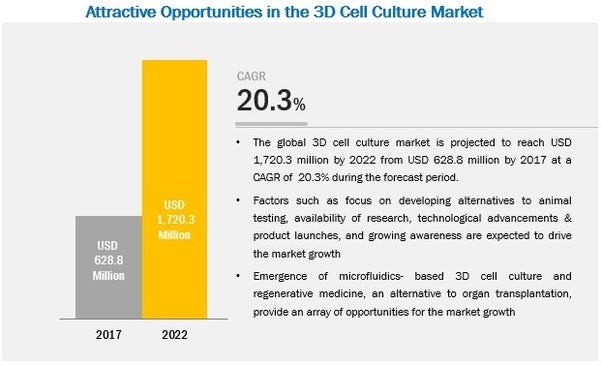The major factors contributing to the growth of the 3D cell culture market include increasing incidences of cancer, growing awareness regarding the benefits of 3D cell culture, rising regulatory approvals for cell culture-based vaccines, funding for cell-based research, and technological advancements. On the other hand, high cost of cell biology research and lack of infrastructure for cell-based research in emerging economies are the major factors restraining the growth of this market. The high growth potential in the Asia-Pacific region provides growth opportunities to players in the 3D cell culture market.

This report aims to provide insights into the global 3D cell culture market. It provides valuable information on the technologies, applications, and end users in the 3D cell culture market. Furthermore, the information for these segments, by region, is also presented in this report. Leading players in the market are profiled to study their product offerings and understand the strategies undertaken by them to be competitive in this market.
Geographically, the 3D cell culture market is dominated by North America, followed by Europe, Asia-Pacific, and Rest of the World (RoW). Growth in the North American segment is primarily driven by rising incidences of cancer, increasing government support in the form of grants and funding, expanding biopharmaceutical industry, and launch of new products in the market.
Download an Illustrative overview of the report:https://www.marketsandmarkets.com/pdfdownloadNew.asp?id=191072847
Apart from comprehensive geographic and product analysis and market sizing, the report also provides a competitive landscape that covers the growth strategies adopted by industry players over the last three years. In addition, the company profiles comprise the product portfolios, developments, and strategies adopted by the market players to maintain and increase their shares in the market. The above-mentioned market research data, current market size, and forecast of the future trends will help key market players and new entrants to make the necessary decisions regarding product offerings, geographic focus, change in strategic approach, and levels of output in order to remain successful in the 3D cell culture market.
Comments
Post a Comment